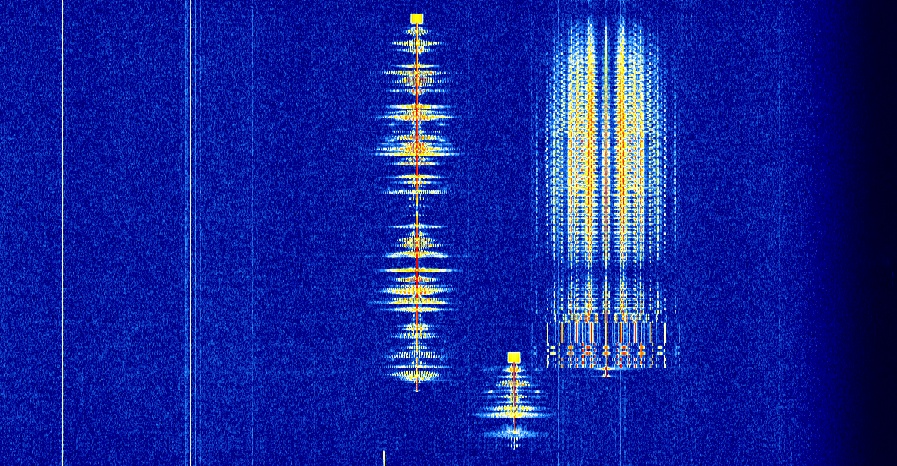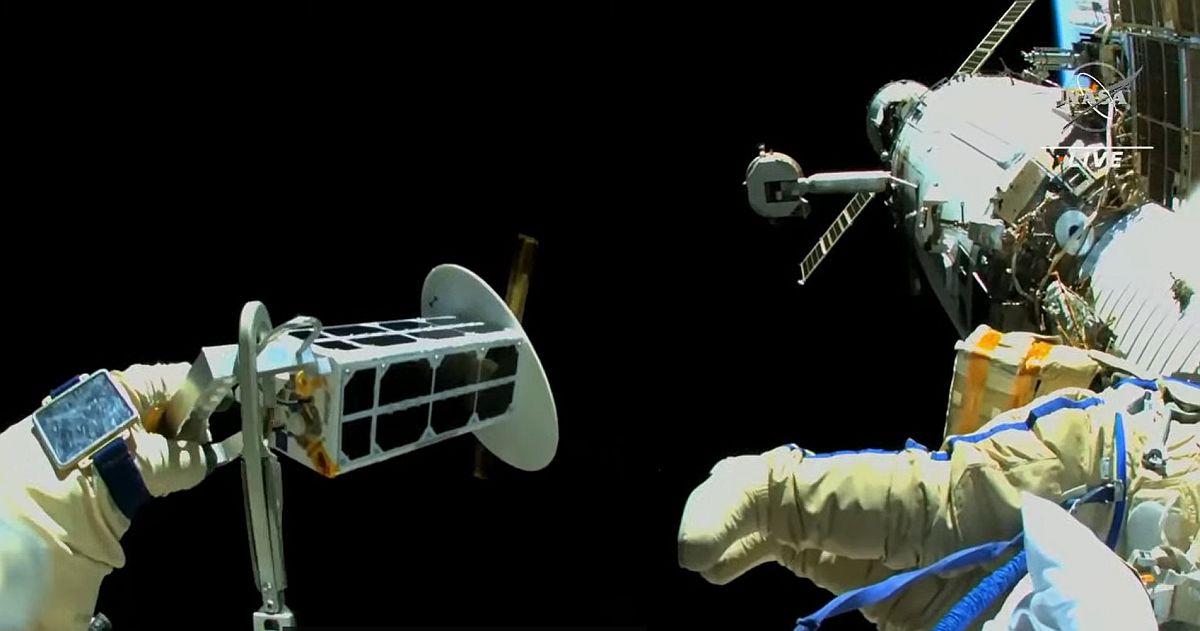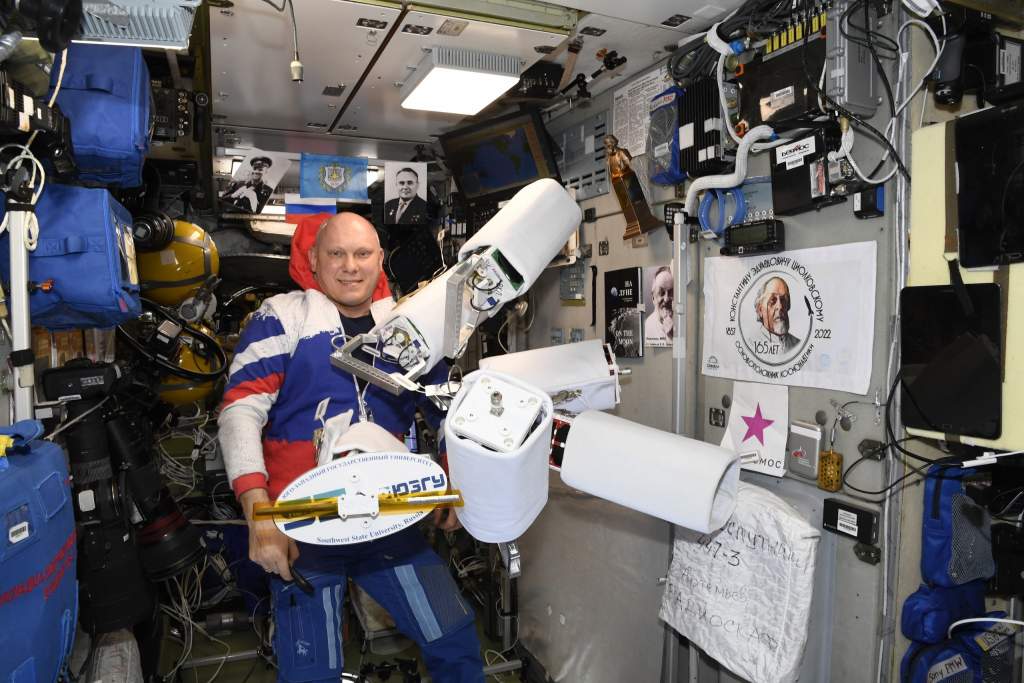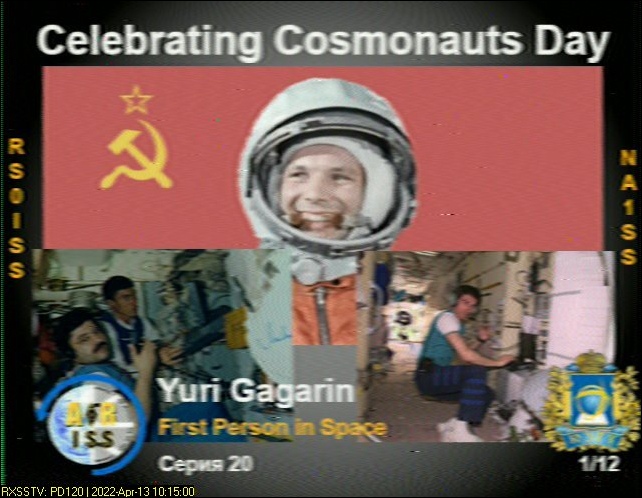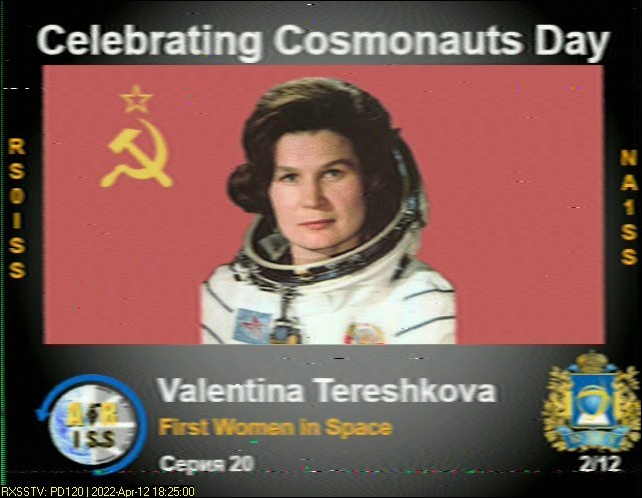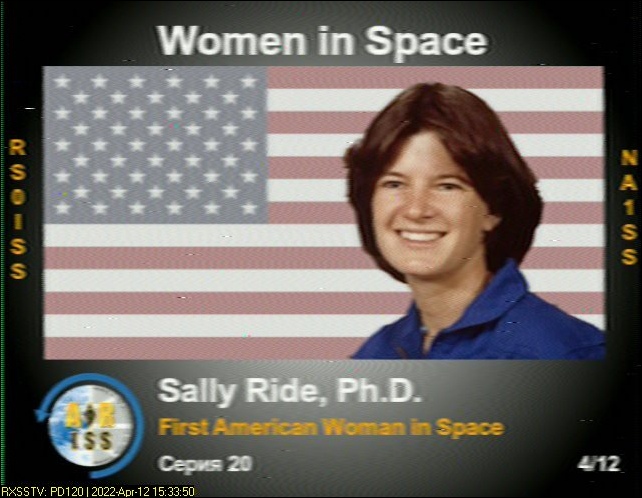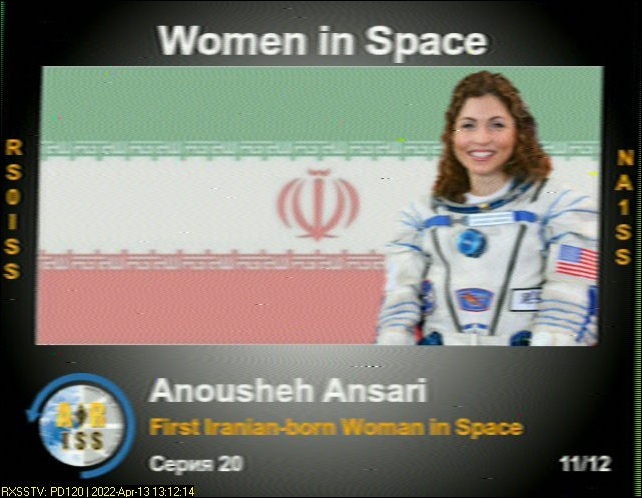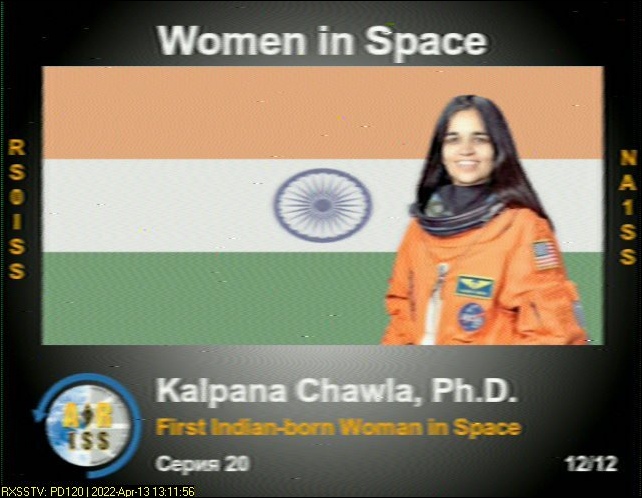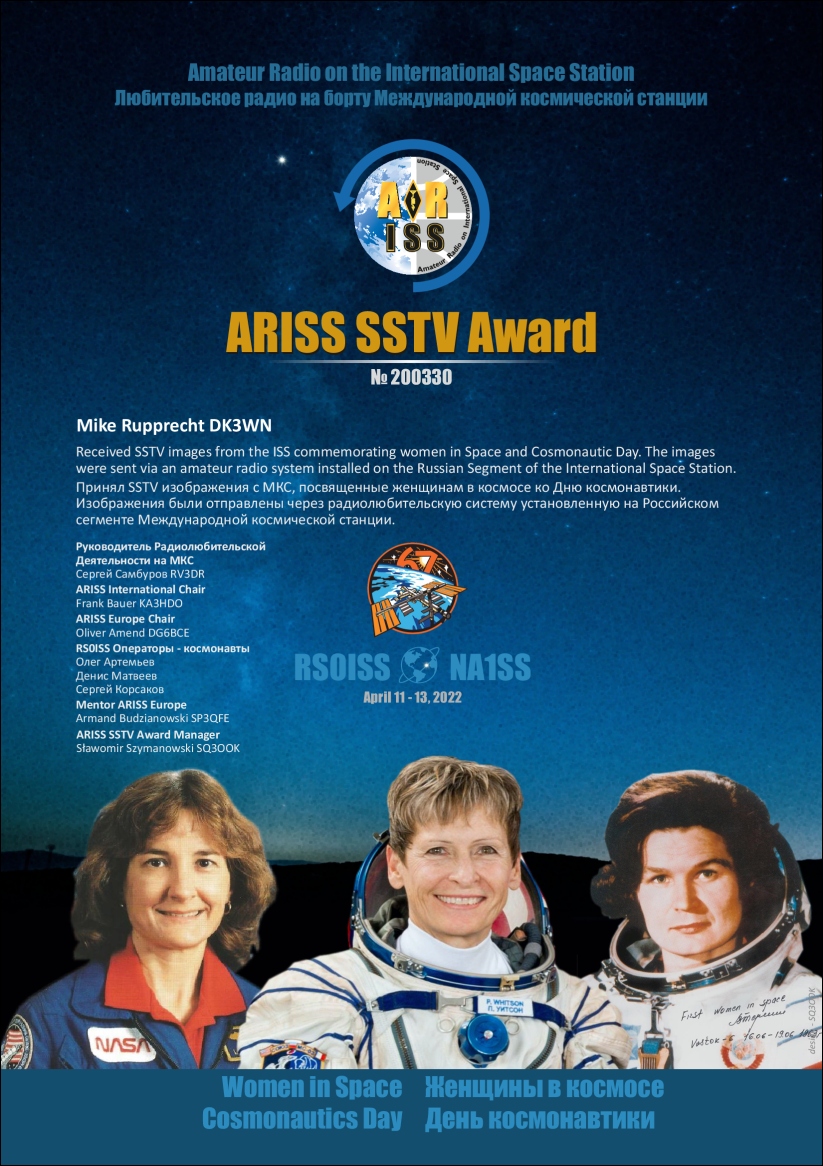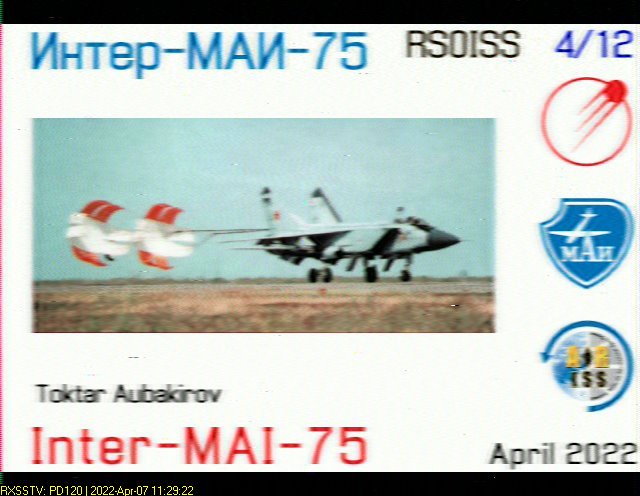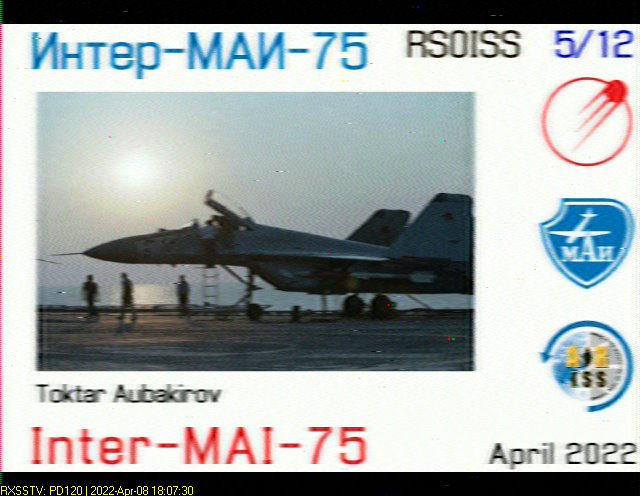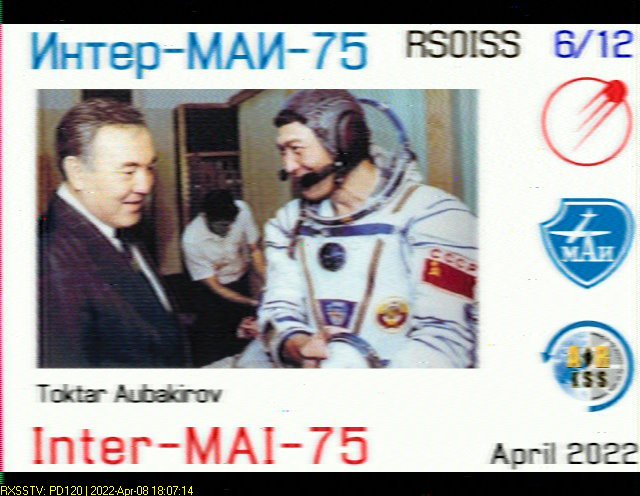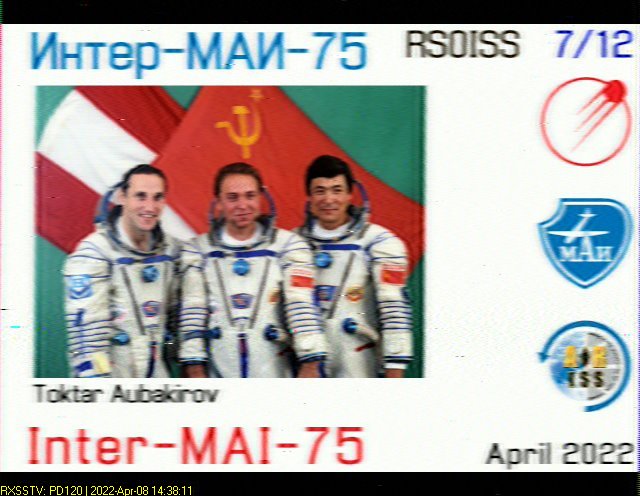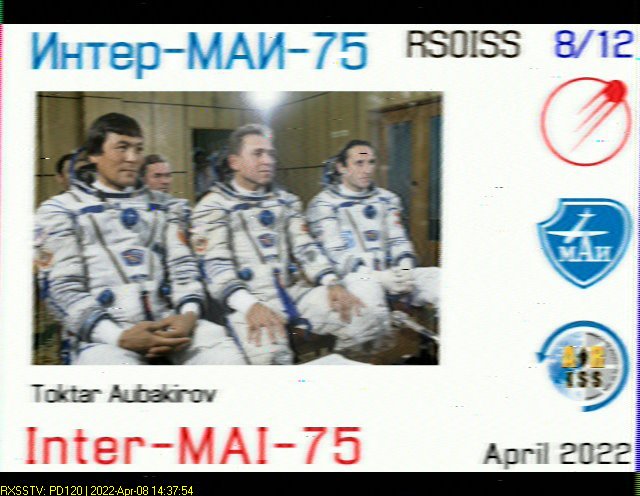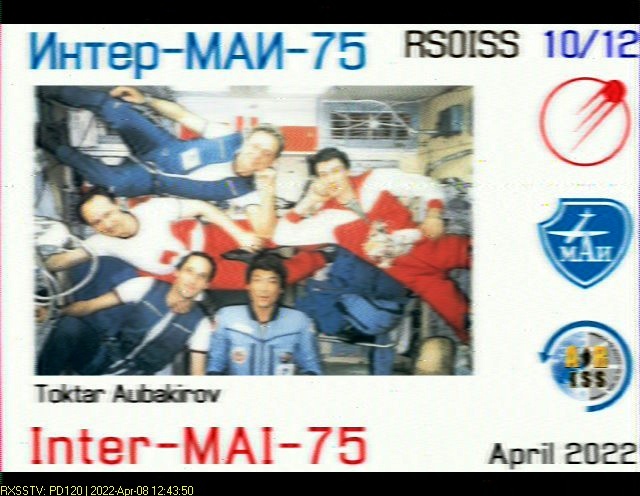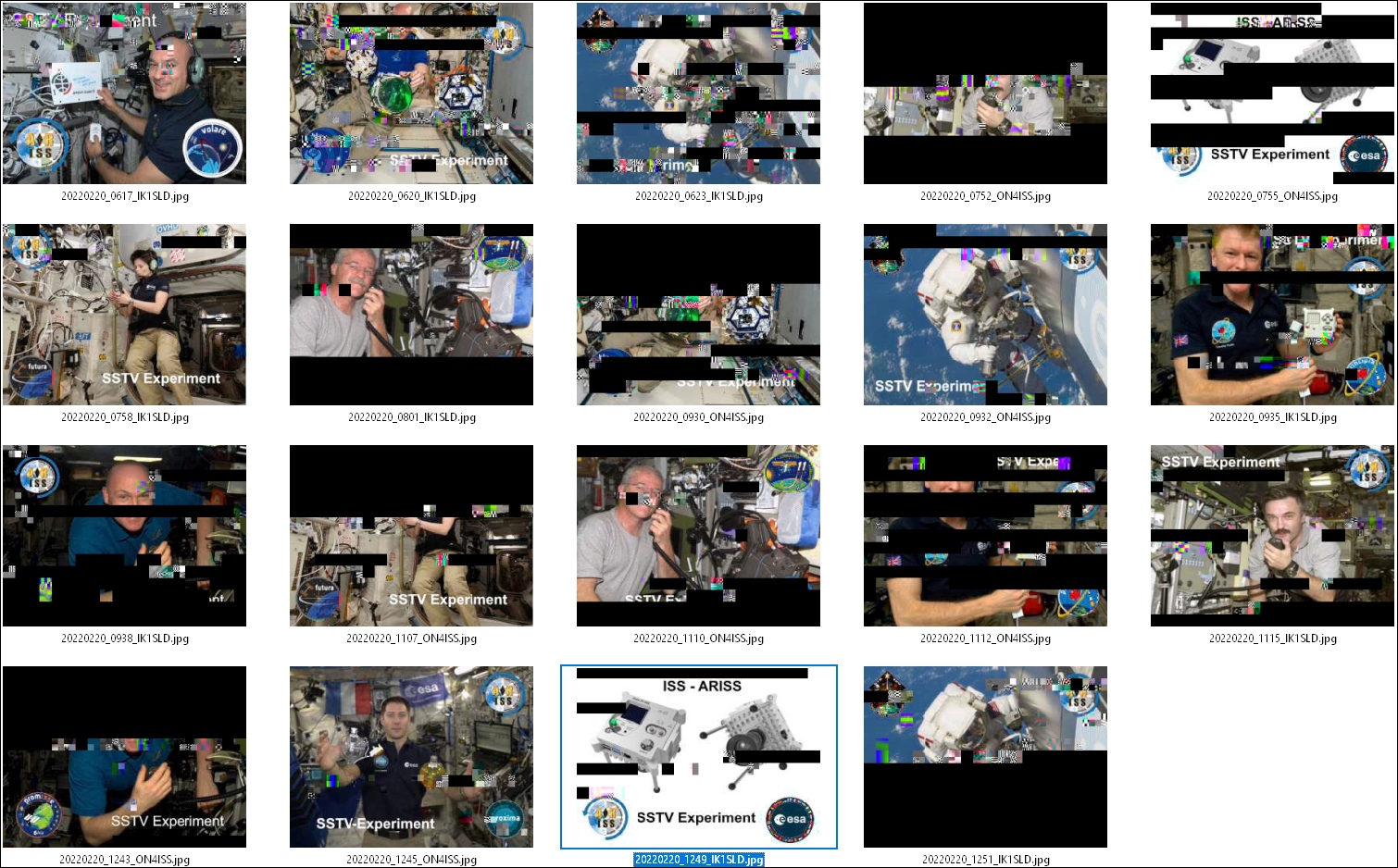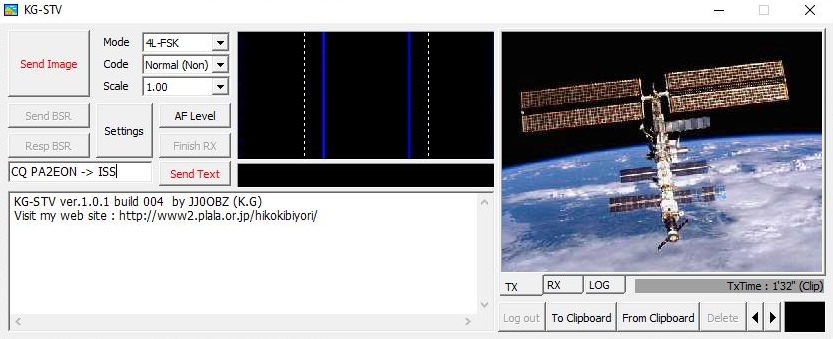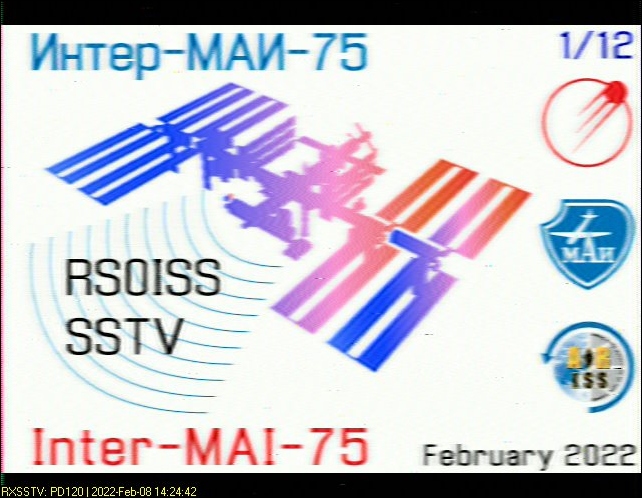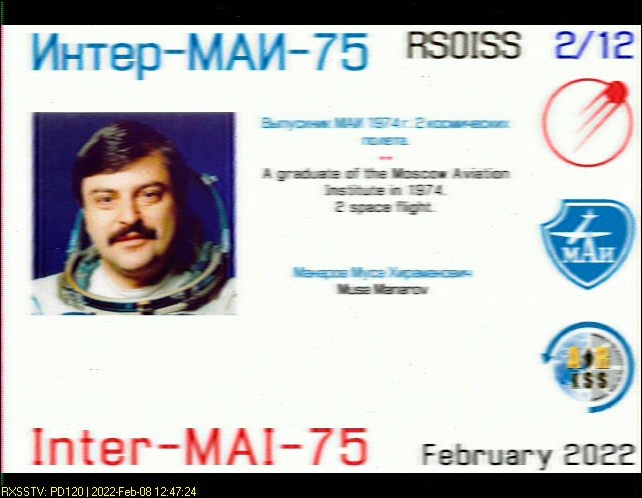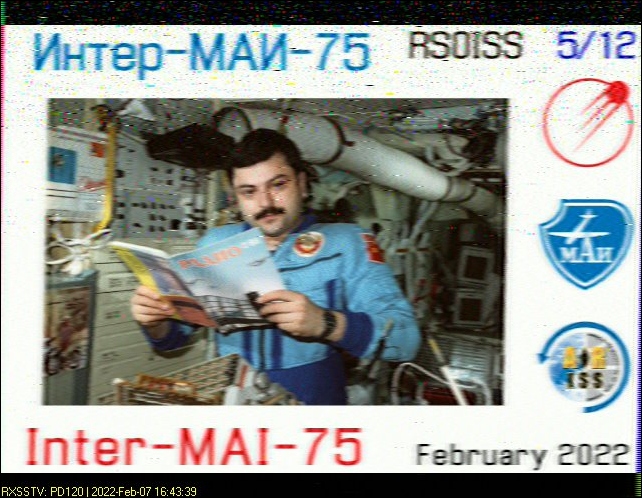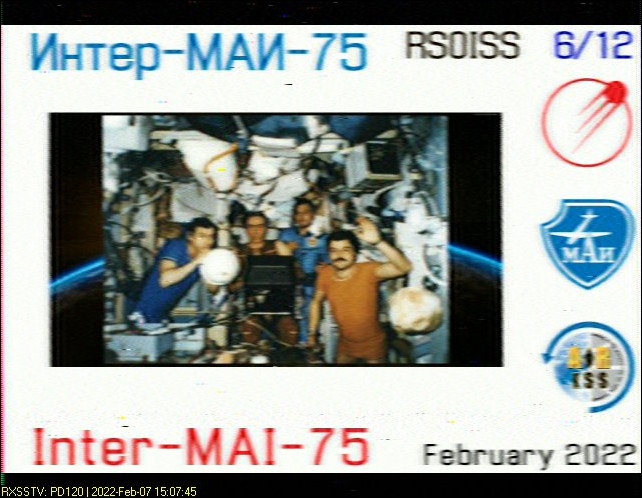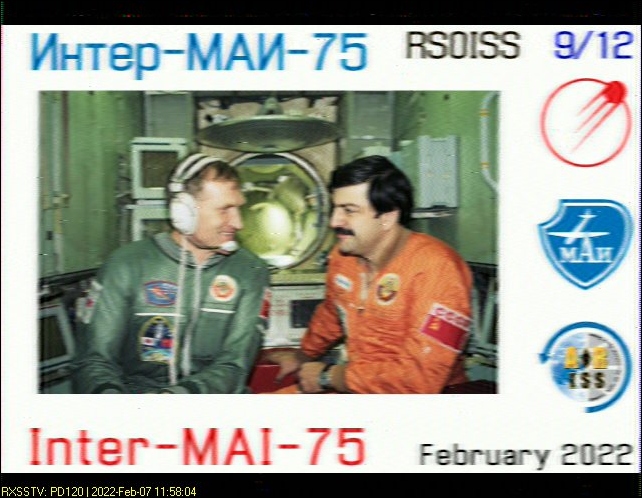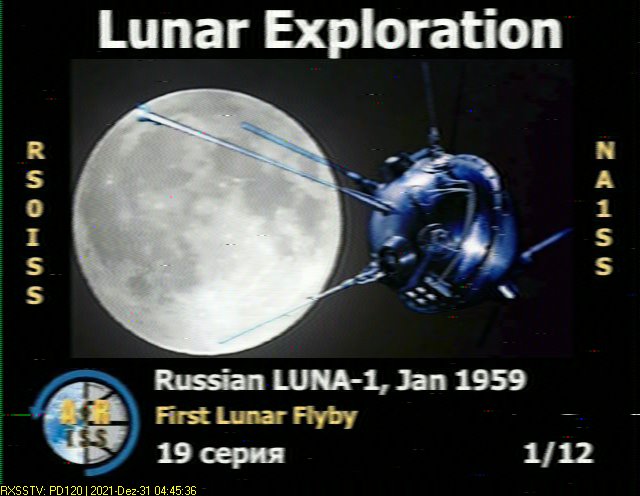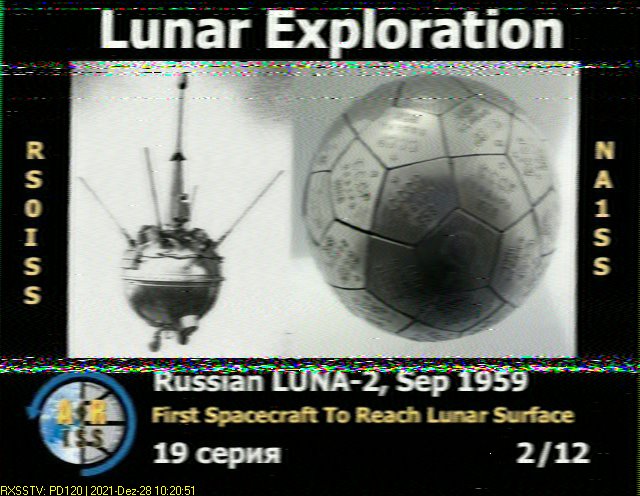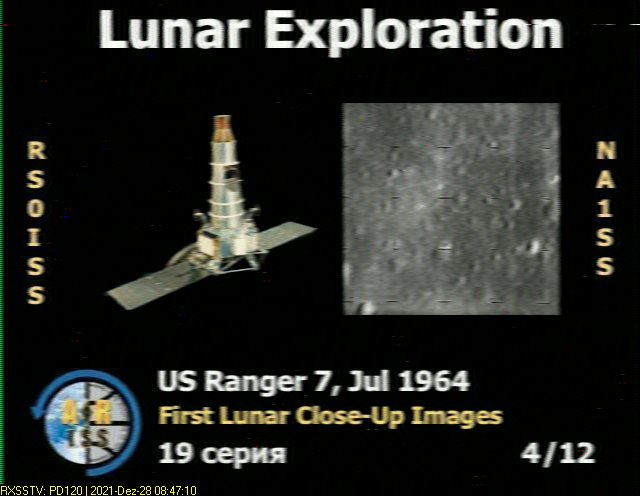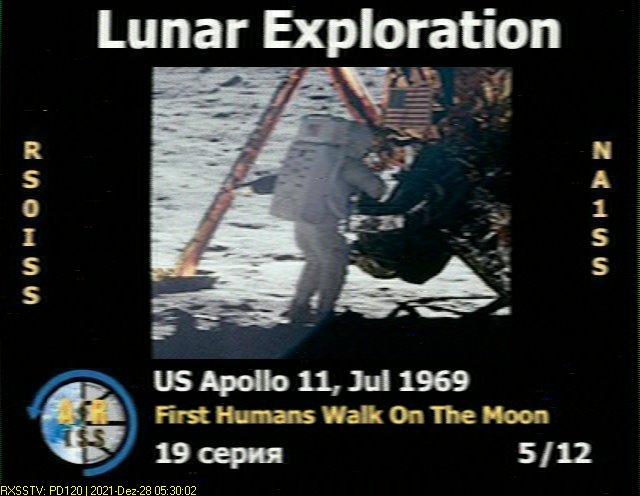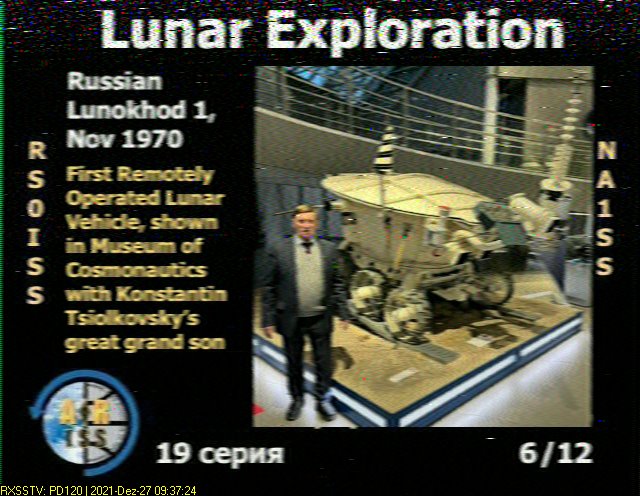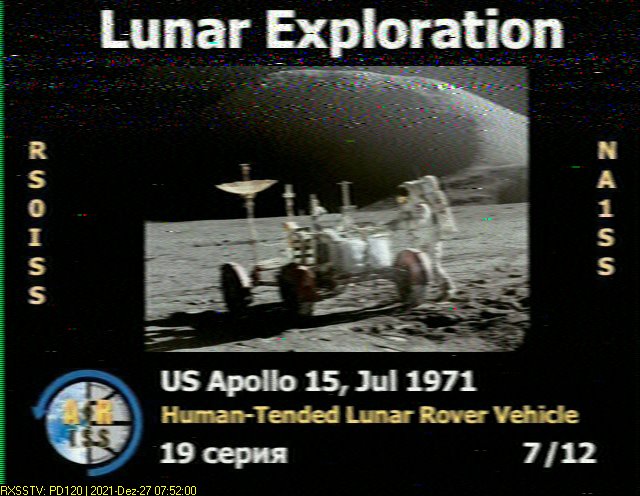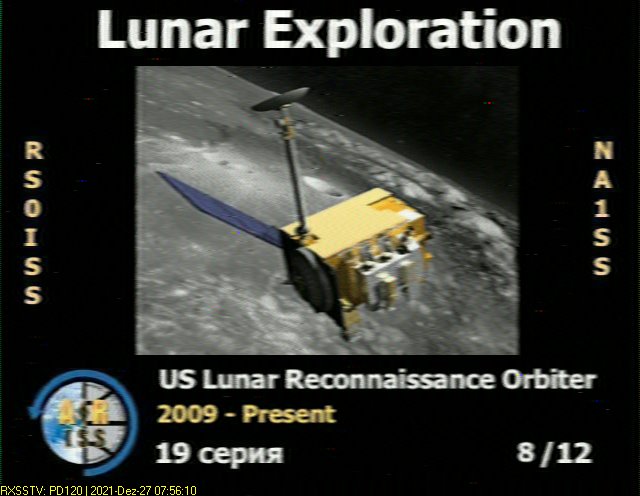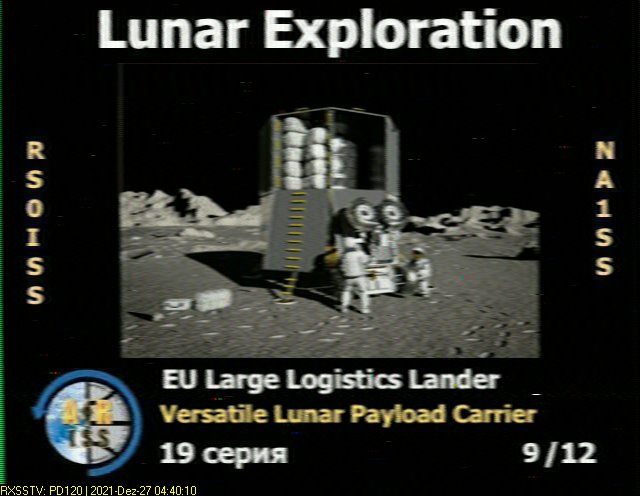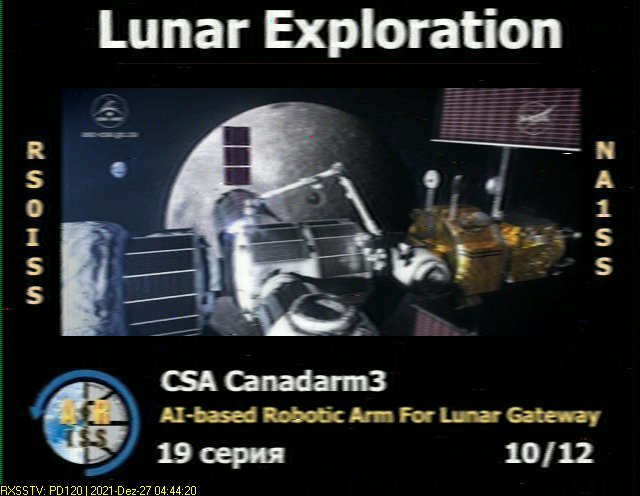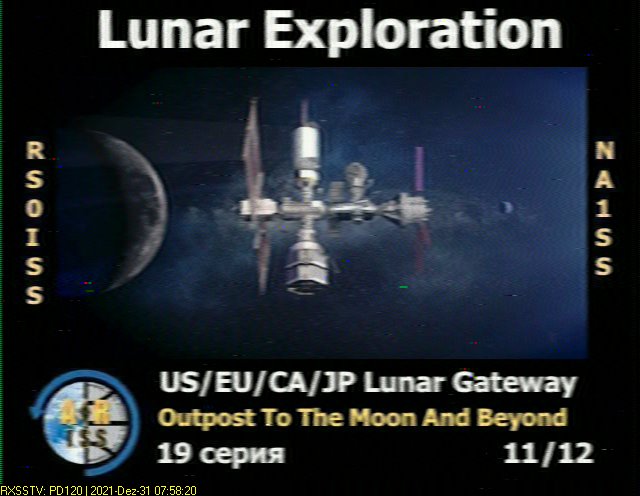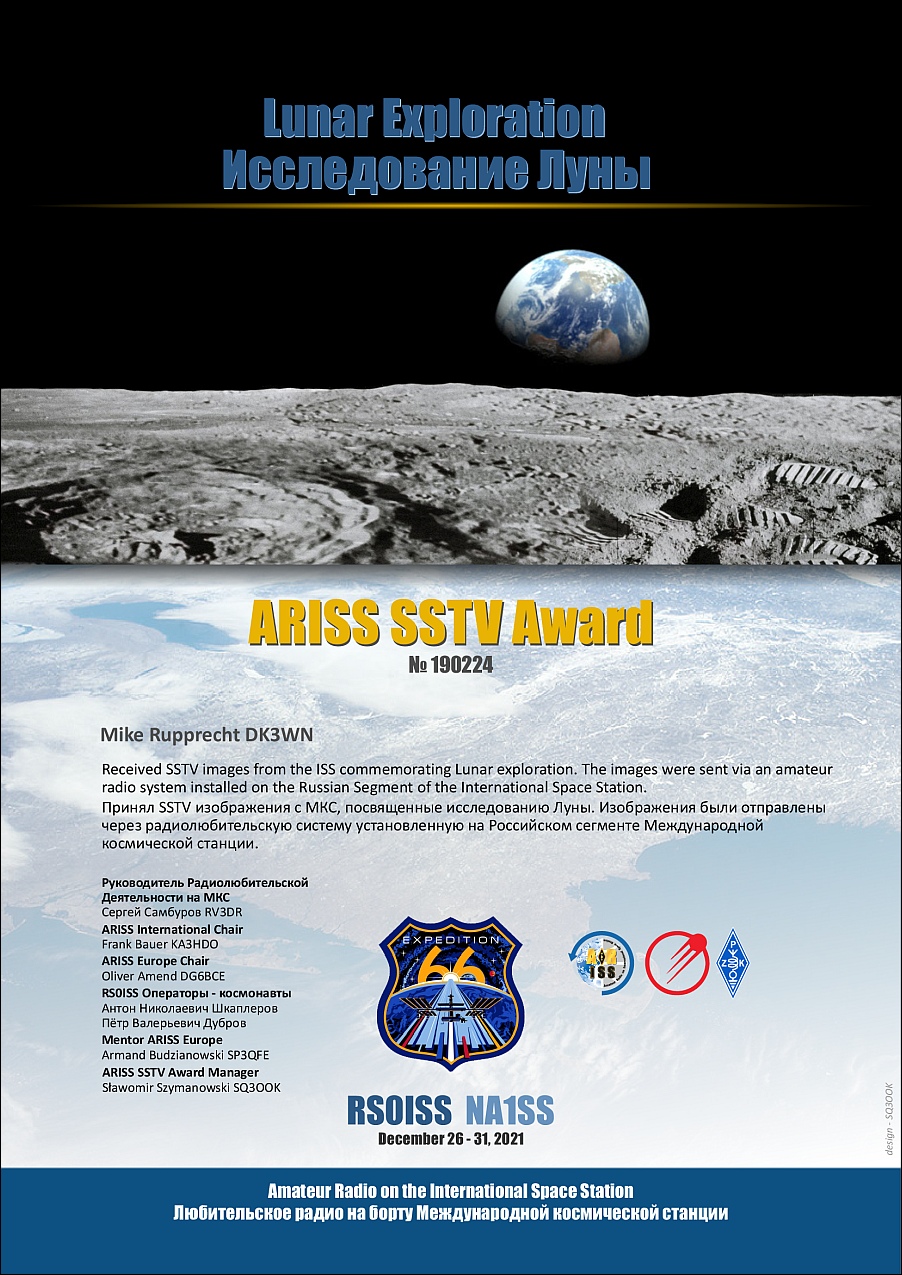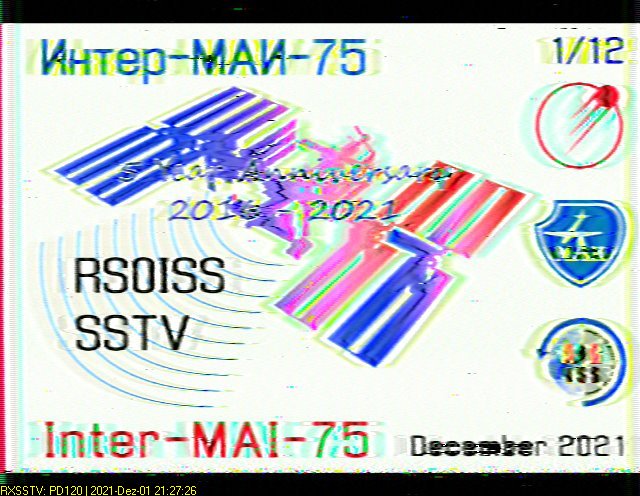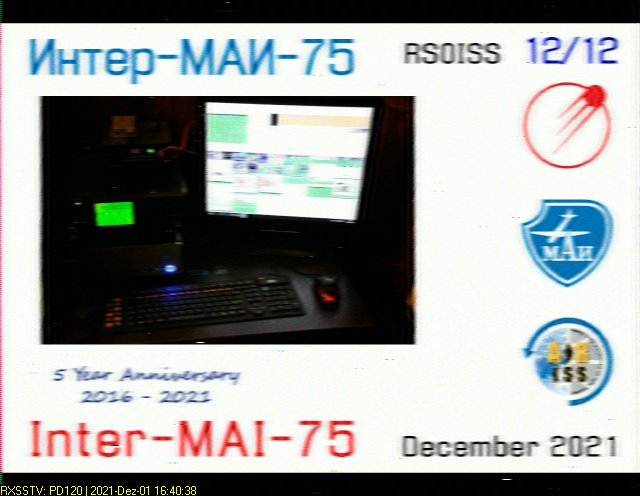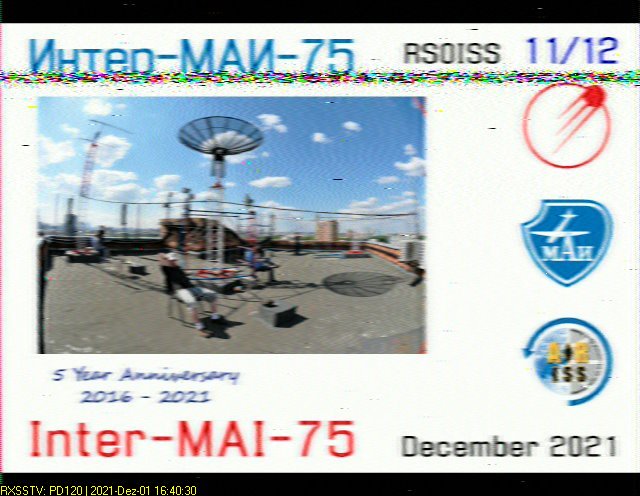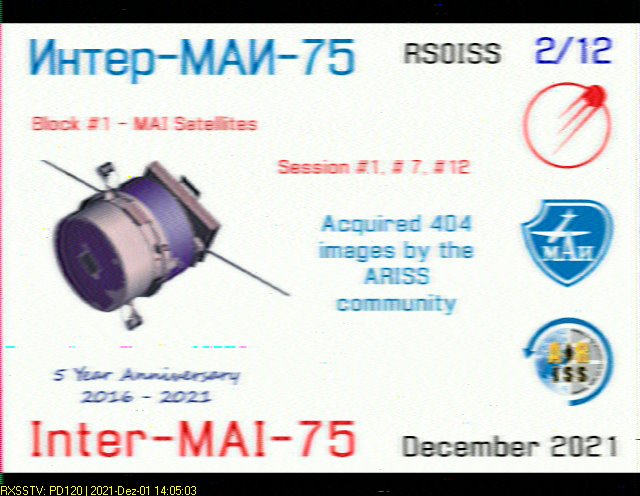
Category: ISS
SWSU-55 – spoken ID’s and telemetry
RS1S
21:05 RS1S>ALL>UI,C,F0 (1142 baud):
SWSU-55 #3 S=2068 U1=4.45 U2=4.29 I1=0.0 T1=22.71 Mx=4.709554 My=-27.136000 Mz=96.657982 Vx=-12.106871 Vy=61.305344 Vz=28.519083 Time=84469156
12:17 RS1S>ALL>UI,C,F0 (1143 baud):
SWSU-55 #3 S=416 U1=4.17 U2=4.02 I1=0.0 T1=17.88 Mx=-8.970578 My=-15.698512 Mz=188.830673 Vx=13.885496 Vy=30.160305 Vz=24.526718 Time=15999090
22:14 RS1S>ALL>UI,C,F0 (1143 baud):
SWSU-55 #3 S=2308 U1=4.24 U2=4.24 I1=0.0 T1=23.68 Mx=-21.977917 My=-22.426445 Mz=130.073380 Vx=10.213740 Vy=66.396950 Vz=21.679390 Time=94636248
RS3S
12:21 RS3S>ALL>UI,C,F0 (1142 baud):
SWSU-55 #5 S=256 U1=4.26 U2=4.22 I1=0.0 T1=19.17 Mx=36.330841 My=-10.316165 Mz=-33.191139 Vx=-6.473282 Vy=28.381680 Vz=1.160305 Time=9935050
21:01 RS3S>ALL>UI,C,F0 (1142 baud):
SWSU-55 #5 S=2023 U1=4.74 U2=4.72 I1=0.0 T1=21.10 Mx=-21.080860 My=-2.691174 Mz=26.911736 Vx=-29.221375 Vy=33.610687 Vz=-14.877863 Time=84612028
21:04 RS3S>ALL>UI,C,F0 (1149 baud):
SWSU-55 #5 S=2028 U1=4.55 U2=4.53 I1=0.0 T1=22.39 Mx=65.260956 My=28.481586 Mz=-1.121322 Vx=-30.923664 Vy=33.007633 Vz=15.305344 Time=84823158
RS4S
20:52 RS4S>ALL>UI,C,F0 (1142 baud):
SWSU-55 #6 S=1920 U1=4.96 U2=4.93 I1=0.0 T1=21.42 Mx=23.323503 My=74.007271 Mz=47.544064 Vx=0.000000 Vy=0.000000 Vz=0.000000 Time=79130054
20:54 RS4S>ALL>UI,C,F0 (1142 baud):
SWSU-55 #6 S=1921 U1=4.80 U2=4.78 I1=0.0 T1=21.75 Mx=-33.863934 My=47.319801 Mz=43.731571 Vx=0.000000 Vy=0.000000 Vz=0.000000 Time=79164070
12:17 RS4S>ALL>UI,C,F0 (1142 baud):
SWSU-55 #6 S=399 U1=4.40 U2=4.28 I1=0.0 T1=22.07 Mx=-41.937454 My=43.283039 Mz=19.959538 Vx=0.000000 Vy=0.000000 Vz=0.000000 Time=15661126
21:19 RS4S>ALL>UI,C,F0 (1142 baud):
SWSU-55 #6 S=2157 U1=4.90 U2=4.87 I1=0.0 T1=22.07 Mx=-22.874975 My=46.647007 Mz=53.374943 Vx=0.000000 Vy=0.000000 Vz=0.000000 Time=89116118
RS5S
20:54 RS5S>ALL>UI,C,F0 (1124 baud):
SWSU-55 #7 S=1639 U1=4.25 U2=4.22 T1=8.21 Mx=43.955833 My=-37.227901 Mz=-13.007339 Vx=-21.114504 Vy=30.442749 Vz=-17.778625 Time=81761025 R
21:18 RS5S>ALL>UI,C,F0 (1128 baud):
SWSU-55 #7 S=1842 U1=4.35 U2=4.28 T1=13.37 Mx=-10.316165 My=-34.985256 Mz=1.794116 Vx=-10.145039 Vy=29.503817 Vz=24.190840 Time=92091024 R
22:15 RS5S>ALL>UI,C,F0 (1127 baud):
SWSU-55 #7 S=1952 U1=4.20 U2=4.21 T1=14.66 Mx=-2.018380 My=-6.055140 Mz=36.555107 Vx=-12.595420 Vy=-36.488548 Vz=-10.687023 Time=97691207 R
22:15 RS5S>ALL>UI,C,F0 (1128 baud):
SWSU-55 #7 S=1953 U1=4.20 U2=4.21 T1=13.69 Mx=67.055077 My=0.224264 Mz=-19.511007 Vx=-20.450382 Vy=26.832062 Vz=-23.755726 Time=97728239 R
RS6S
20:51 RS6S>ALL>UI,C,F0 (1132 baud):
SWSU-55 #8 S=1787 U1=5.04 U2=5.02 T1=18.20 Mx=113.029289 My=-0.448529 Mz=26.911736 Vx=-2.152672 Vy=-81.900764 Vz=-19.206106 Time=84145140
12:13 RS6S>ALL>UI,C,F0 (1129 baud):
SWSU-55 #8 S=347 U1=4.23 U2=4.07 T1=10.79 Mx=69.297714 My=41.937454 Mz=-31.172760 Vx=0.328244 Vy=-80.106873 Vz=-13.030535 Time=16025095
21:19 RS6S>ALL>UI,C,F0 (1136 baud):
SWSU-55 #8 S=2013 U1=4.43 U2=4.26 T1=20.78 Mx=74.007271 My=-21.977917 Mz=19.735273 Vx=-1.061069 Vy=-82.358780 Vz=-21.870230 Time=94943090
RS9S
21:00 RS9S>ALL>UI,C,F0 (1139 baud):
KETs #1 S=2152 U1=4.91 U2=4.89 T1=21.42 Mx=40.367603 My=72.213158 Mz=2.242645 Vx=-52.450382 Vy=-56.564884 Vz=-30.679390 Time=89816039 R1=0 R2=0
21:01 RS9S>ALL>UI,C,F0 (1138 baud):
KETs #1 S=2153 U1=5.05 U2=5.02 T1=21.10 Mx=1.345587 My=78.044029 Mz=18.838215 Vx=-5.778626 Vy=-59.030533 Vz=-52.977100 Time=89849006 R1=0 R2=0
21:18 RS9S>ALL>UI,C,F0 (1139 baud):
KETs #1 S=2272 U1=4.39 U2=4.30 T1=22.39 Mx=6.727934 My=79.389618 Mz=37.676430 Vx=-50.824429 Vy=-52.488548 Vz=34.557251 Time=95152179 R1=0 R2=0
RS12S
21:02 RS12S>ALL>UI,C,F0 (1134 baud):
KETs #2 S=2122 U1=4.98 U2=4.93 I1=0.0 T1=23.36 Mx=-22.650711 My=-21.753653 Mz=27.584528 Vx=3.305344 Vy=82.358780 Vz=9.877863 Time=87325024 R1=0 R2=0
21:03 RS12S>ALL>UI,C,F0 (1134 baud):
KETs #2 S=2123 U1=5.05 U2=5.00 I1=0.0 T1=23.36 Mx=9.643372 My=-28.033058 Mz=78.716827 Vx=3.343511 Vy=81.694656 Vz=-14.778625 Time=87360226 R1=0 R2=0
22:14 RS12S>ALL>UI,C,F0 (1133 baud):
KETs #2 S=2373 U1=4.24 U2=4.22 I1=0.0 T1=26.26 Mx=40.591866 My=17.268364 Mz=83.650642 Vx=-12.267176 Vy=84.045799 Vz=-7.656488 Time=98032057 R1=0 R2=0
Launch of eight SWSU-55 nanosatellites and two Tsiolkovsky-Ryazan nanosatellites from ISS
On July 21, 2022, during a spacewalk by Samantha Cristoforetti and Oleg Artemyev, ten Russian Nanosats were deployed from the ISS.
ALL 437.050 MHz 1k2 AFSK ? Telemetry Payload: DATA, SSTV, VOICE --------------------------- 437.000 MHz - SWSU-55 No8 - RS6S 437.0125 MHz - Tsiolkovsky-Ryazan 2 - RS12S 437.025 MHz - Tsiolkovsky-Ryazan 1 - RS9S 437.050 MHz - SWSU-55 No1 & R-390 - RS10S 437.062 MHz - SWSU-55 No2 - RS11S 437.075 MHz - SWSU-55 No3 - RS1S 437.082 MHz - SWSU-55 No4 - RS2S 437.087 MHz - SWSU-55 No6 - RS4S 437.100 MHz - SWSU-55 No5 - RS3S 437.1125 MHz - SWSU-55 No7 & R-390 - RS5S
telemetry pakets
[0.3] RS4S>ALL:SWSU-55 #6 S=400 U1=4.75 U2=4.73 I1=0.0 T1=21.75 Mx=8.970578 My=17.044100 Mz=-31.397024 Vx=0.000000 Vy=0.000000 Vz=0.000000 Time=15724233
[0.3] RS12S>ALL:KETs #2 S=426 U1=4.16 U2=4.08 I1=0.0 T1=20.46 Mx=-23.772032 My=3.139702 Mz=93.294014 Vx=-9.251908 Vy=52.786259 Vz=-11.129771 Time=16306022 R1=0 R2=0

Strong QSB due to the initial high spin rate. Hopefully this will get better …
You see data packets, SSTV and voice transmissions
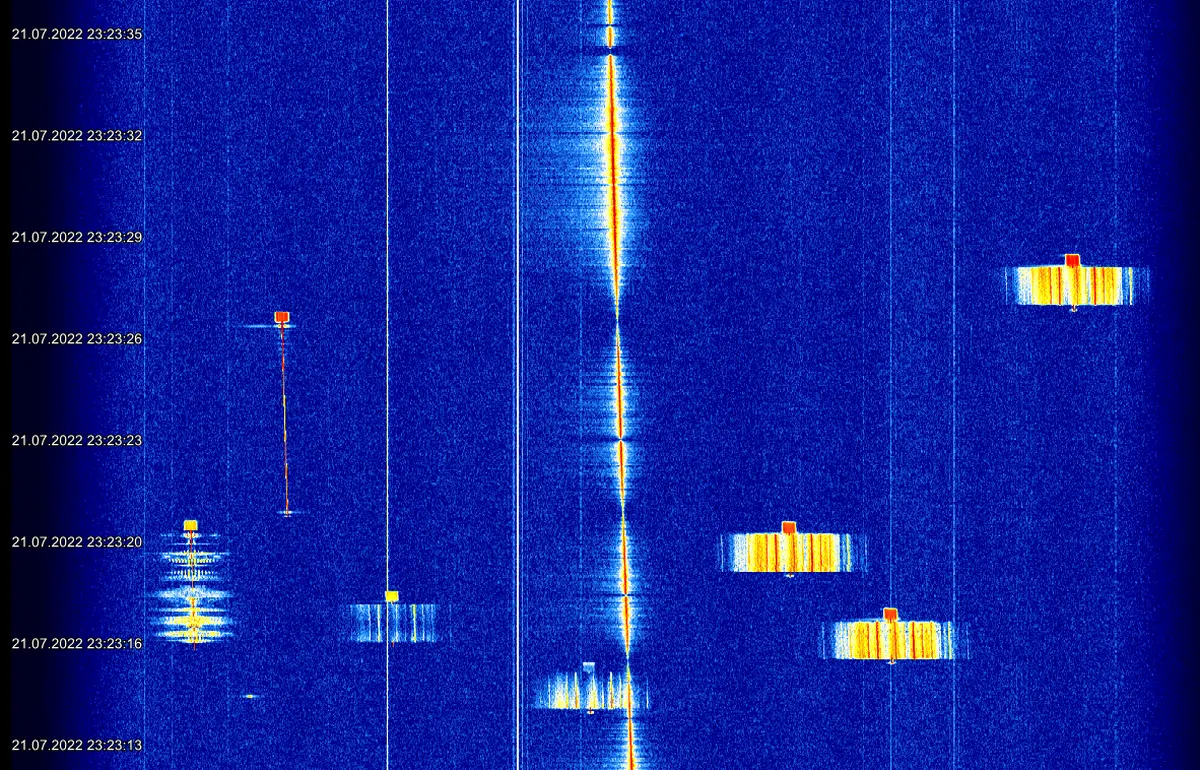
It looks like one satellite is broken and transmits only a fat carrier
ISS – SSTV – Women in Space
Thank you for the report that you sent to ARISS. In the attachment, I am sending you the official “ARISS SSTV Award”.
April 12th is the annual Cosmonautic Day to commemorate the first human flight in the Space by Jurij Gagarin in 1961. The images of this ARISS SSTV event series 20 are also honouring the “Women in Space”. Our ARISS award shows from the left to right: Linda Godwin – the first female astronaut to conduct ARISS school communications from the ISS; Peggy Whitson – the first female ISS commander; Valentina Tereshkova – the first woman in space.
The ARISS SSTV event was realized thanks to the commitment of Sergey Samburov RV3DR from ARISS Russia and Frank Bauer KA3HDO – ARISS International Chair, as well as many other people. The official ARISS awards are provided by the ARISS Ad-hoc Award Committee: Oliver DG6BCE (chair), Armand SP3QFE, Francesco IK0WGF, Bruce W6WW, Shizuo JE1MUI, Darin VE3OIJ, Ian VE9IM.
Amateur Radio on the International Space Station (ARISS) is a cooperative venture of international amateur radio societies and the space agencies that support the International Space Station (ISS). The primary goal of ARISS is to promote exploration of science, technology, engineering, the arts, and mathematics topics. ARISS does this by organizing scheduled contacts via amateur radio between crew members aboard the ISS and students. Before and during these radio contacts, students, educators, parents, and communities take part in hands-on learning activities tied to space, space technologies, and amateur radio.
More info:
https://www.ariss.org/
https://www.ariss-eu.org/
https://ariss.pzk.org.pl/sstv/
—–
Greetings – Slawek SQ3OOK, ARISS SSTV Award Manager
ISS – SSTV experiment – Toktar Aubakirov
Toktar Ongarbayuly Aubakirov (born on 27 July 1946) is a retired Kazakh Air Force officer and a former cosmonaut. He is the first person from Kazakhstan to go to space. On 2 October 1991 he launched with Russian cosmonaut Alexander Volkov as flight commander, and the Austrian research cosmonaut Franz Viehböck in Soyuz TM-13 from the Baikonur Cosmodrome spaceport, and spent over eight days in space. Their mission was the last launched by the Soviet Union, which dissolved shortly thereafter, with Aubakirov becoming a citizen of the independent Republic of Kazakhstan. Since 1993, he has been the general director of the National Aerospace Agency of Republic of Kazakhstan. He was a member of the Kazakhstan parliament. Now he is a pensioner and consultant.
07 April 2022
09:25 UTC active
11:00 UTC no activities
12:35 UTC no activities
14:10 UTC no activities
08 April 2022
10:15 UTC – 16:10 UTC activ
ARISS Digital SSTV experiment
ARISS Europe to Perform Special Digital SSTV Experiment
February 15, 2022 – Amateur Radio on the International Space Station (ARISS) is planning for a special SSTV experiment. ARISS is the group that puts together special amateur radio contacts between students around the globe and crew members with ham radio licenses on the International Space Station (ISS) and develops and operates the amateur radio equipment on ISS.
As part of its ARISS 2.0 initiative, the ARISS International team is expanding its educational and life-long learning opportunities for youth and ham radio operators around the world. ARISS Slow Scan Television (SSTV), which is the transmission of images from ISS using amateur radio, is a very popular ARISS mode of operation. To expand ARISS SSTV capabilities, the ARISS Europe and ARISS USA teams plan to perform special SSTV Experiments using a new SSTV digital coding scheme. For the signal reception, the software “KG-STV” is required, as available on internet.
We kindly request that the amateur radio community refrain from the use of the voice repeater thin this SSTV experiment on 20th of February 2022 over Europe.
This is a unique and official ARISS experiment. We kindly request keeping the voice repeater uplink free from other voice transmissions during the experiment time period. Also note that ARISS is temporarily employing the voice repeater to expedite these experiments and make a more permanent, more expansive SSTV capability fully operational on other downlink frequencies.
The first experiment in the series will utilize ARISS approved ground stations in Europe that will transmit these digital SSTV signals. These will be available for all in the ISS footprint when SSTV transmissions occur. The first SSTV experiment is planned for 20 February 2022 between 05:10 UTC and 12:00 UTC for five ISS passes over Europe. Please be aware that this event depends on ARISS IORS radio availabilities and ISS crew support, so last-minute changes may occur.
To promote quick experimental SSTV investigations to learn and improve the ARISS team will employ the ISS Kenwood radio in its cross-band repeater mode. The crossband repeater operates on a downlink of 437.800 MHz. Each transmission sequence will consist of 1:40 minute transmission, followed by 1:20 minute pause and will be repeated several times within an ISS pass over Europe.
The used modulation is MSK w/o error correction. For the decoding of the 320 x 240 px image, the software KG-STV is required. The KG-STV software can be downloaded from the following link: http://amsat-nl.org/wordpress/wp-content/uploads/2022/02/kgstv_ISS.zip
The ZIP file contains the KG-STV program, an installation and setup manual, some images and MP3 audio samples for your first tests as well as links for additional technical information about the KG-STV use.
The members of the ham radio community youth and the public are invited to receive and decode these special SSTV signals.
Experiment reports are welcome and should be uploaded to “sstvtest@amsat-on.be”
More information will be available on the AMSAT-NL.org web page: https://amsat-nl.org/?page_id=568
(for the team: Oliver Amend, DG6BCE)
ISS Inter-MAI-75 SSTV experiment
ISS SSTV event
An ARISS SSTV Event is planned for Dec 26 at 18:25 UTC through Dec 31 at 17:05 UTC. The general theme will be lunar exploration. The event will take place at the usual frequency of 145.800 MHz and the mode is PD 120.
Application for ARISS SSTV Award:
https://docs.google.com/forms/d/e/1FAIpQLSfsqjedhbVkxok4zX_VLz5V7zuDIFKpo7AR8giMF2vxr1ip_g/viewform?c=0&w=1
